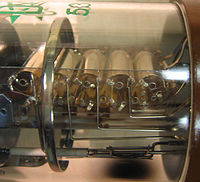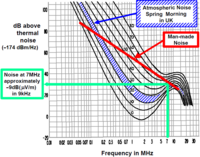
Pure Conducting Polymer Hydrogels Increase Signal-to-Noise of Cutaneous Electrodes by Lowering Skin Interface Impedance.
Sign Up to like & getrecommendations! Published in 2023 at "Advanced healthcare materials"
DOI: 10.1002/adhm.202202661
Abstract: Cutaneous electrodes are routinely used for noninvasive electrophysiological sensing of signals from the brain, the heart, and the neuromuscular system. These bioelectronic signals propagate as ionic charge from their sources to the skin-electrode interface where… read more here.
Keywords: polymer hydrogels; cutaneous electrodes; interface; impedance ... See more keywords

Enlarging the Stokes Shift by Weakening the π‐Conjugation of Cyanines for High Signal‐to‐Noise Ratiometric Imaging
Sign Up to like & getrecommendations! Published in 2022 at "Advanced Science"
DOI: 10.1002/advs.202205080
Abstract: The signal‐to‐noise ratio (SNR) is one of the key features of a fluorescent probe and one that often defines its potential utility for in vivo labeling and analyte detection applications. Here, it is reported that… read more here.
Keywords: shift weakening; enlarging stokes; stokes shift; conjugation ... See more keywords

Comments on “Determination of Background, Signal‐to‐Noise, and Dynamic Range of a Flow Cytometer: A Novel Practical Method for Instrument Characterization and Standardization”
Sign Up to like & getrecommendations! Published in 2019 at "Cytometry Part A"
DOI: 10.1002/cyto.a.23943
Abstract: The characterization of flow cytometer instrument performance can be used to help design and execute better assays but involves technical complexities that have their roots in the instrument hardware and software. A recent publication that… read more here.
Keywords: noise dynamic; background signal; signal noise; flow ... See more keywords

Toward quantitative fast diffusion kurtosis imaging with b‐values chosen in consideration of signal‐to‐noise ratio and model fidelity
Sign Up to like & getrecommendations! Published in 2018 at "Medical Physics"
DOI: 10.1002/mp.12711
Abstract: PURPOSE Diffusion kurtosis (DK) imaging is a variant of conventional diffusion magnetic resonance (MR) imaging that allows assessment of non-Gaussian diffusion. Fast DK imaging expedites the procedure by decreasing both scan time (acquiring the minimally… read more here.
Keywords: diffusion; matter; signal noise; diffusion kurtosis ... See more keywords

The ultimate signal‐to‐noise ratio in realistic body models
Sign Up to like & getrecommendations! Published in 2017 at "Magnetic Resonance in Medicine"
DOI: 10.1002/mrm.26564
Abstract: We compute the ultimate signal‐to‐noise ratio (uSNR) and G‐factor (uGF) in a realistic head model from 0.5 to 21 Tesla. read more here.
Keywords: ratio realistic; signal noise; ultimate signal; noise ratio ... See more keywords

Simultaneous acquisition of 40- and 80-Hz auditory steady-state responses for a direct comparison of response amplitude, residual noise and signal-to-noise ratio
Sign Up to like & getrecommendations! Published in 2018 at "European Archives of Oto-Rhino-Laryngology"
DOI: 10.1007/s00405-018-5097-y
Abstract: PurposeThe purpose of this study was to establish a paradigm that allows for the simultaneous recording of auditory steady-state responses (ASSRs) to two largely different modulation rates.MethodsIn 21 normal-hearing adults, ASSRs for 40- and 80-Hz… read more here.
Keywords: state responses; residual noise; steady state; noise ... See more keywords

Prior-Apprised Unsupervised Learning of Subpixel Curvilinear Features in Low Signal/Noise Images.
Sign Up to like & getrecommendations! Published in 2020 at "Biophysical journal"
DOI: 10.1016/j.bpj.2020.04.009
Abstract: Many biophysical problems involve molecular and nanoscale targets moving next to a curvilinear track, e.g., a cytosolic cargo transported by motor proteins moving along a microtubule. For this type of problem, fluorescence imaging is usually… read more here.
Keywords: prior apprised; microscopy; low signal; curvilinear features ... See more keywords

Dendritic Cells Interpret Haptotactic Chemokine Gradients in a Manner Governed by Signal-to-Noise Ratio and Dependent on GRK6
Sign Up to like & getrecommendations! Published in 2017 at "Current Biology"
DOI: 10.1016/j.cub.2017.04.004
Abstract: Navigation of cells along gradients of guidance cues is a determining step in many developmental and immunological processes. Gradients can either be soluble or immobilized to tissues as demonstrated for the haptotactic migration of dendritic… read more here.
Keywords: noise ratio; dendritic cells; governed signal; ccl21 ... See more keywords

Active elimination of radio frequency interference for improved signal-to-noise ratio for in-situ NMR experiments in strong magnetic field gradients.
Sign Up to like & getrecommendations! Published in 2018 at "Journal of magnetic resonance"
DOI: 10.1016/j.jmr.2018.01.002
Abstract: Improvement in the signal-to-noise ratio of Nuclear Magnetic Resonance (NMR) systems may be achieved either by increasing the signal amplitude or by decreasing the noise. The noise has multiple origins - not all of which… read more here.
Keywords: signal noise; radio frequency; interference; noise ... See more keywords

Transient phase fraction and dislocation density estimation from in-situ X-ray diffraction data with a low signal-to-noise ratio using a Bayesian approach to the Rietveld analysis
Sign Up to like & getrecommendations! Published in 2021 at "Materials Characterization"
DOI: 10.1016/j.matchar.2020.110860
Abstract: Abstract We describe the analysis of in-situ HT-XRD data of a dual phase stainless steel exposed to a complex thermal cycle of heating, holding and cooling. For the conditions used only low quality diffraction data… read more here.
Keywords: phase; low signal; noise ratio; approach ... See more keywords

Improvement of signal-to-noise ratio in photothermal microscopy by optimizing detection aperture
Sign Up to like & getrecommendations! Published in 2017 at "Optics Communications"
DOI: 10.1016/j.optcom.2016.12.074
Abstract: Abstract We present a method for improving the signal-to-noise ratio in photothermal microscopy by optimizing the detection aperture in the spatially segmented balanced detection scheme. Experimental studies show a 1.44-fold improvement in the signal-to-noise ratio… read more here.
Keywords: detection; signal noise; noise ratio; microscopy ... See more keywords